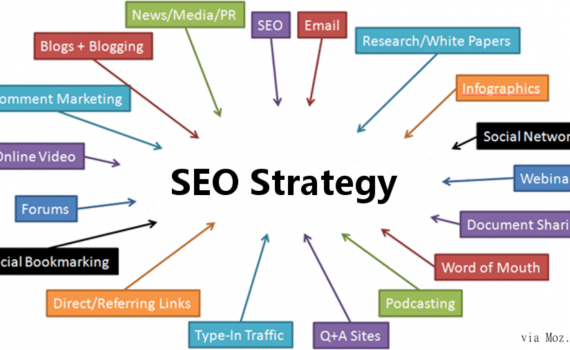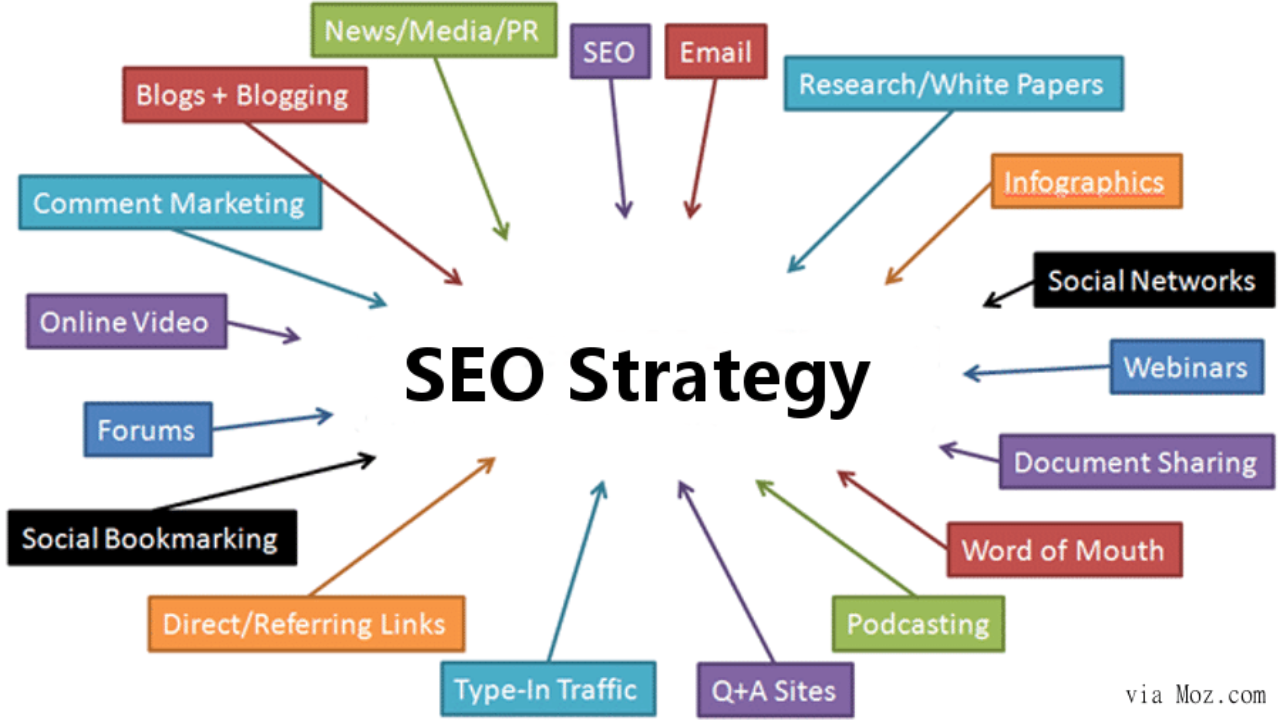
Leverage Competitor SEO Strategies: Analyze Rivals to Boost Your Rankings
Category : Talk To Our SEO Experts
Understanding your competitors’ SEO strategies can provide invaluable insights and opportunities to refine your own approach. By analyzing how rivals are performing in search engine rankings, you can uncover successful tactics, identify gaps, and implement effective strategies to boost your own SEO performance. This guide will walk you through techniques for studying your competitors and leveraging their strategies to improve your SEO.
1. Identify Your Competitors
a. Determine Direct Competitors
+ Industry and Niche: Identify businesses in your industry or niche that are targeting the same audience or keywords. These are your primary competitors.
+ Search Results: Perform searches for your primary keywords and note which sites consistently rank on the first page of search results.
b. Analyze Indirect Competitors
+ Related Niches: Consider companies in related niches that might be competing for similar audiences or keywords.
+ Emerging Competitors: Keep an eye on new or emerging competitors who might be targeting the same market.
2. Conduct Competitor Keyword Analysis
a. Identify Competitor Keywords
+ Keyword Research Tools: Use tools like Ahrefs, SEMrush, and Moz to discover the keywords your competitors are ranking for. Enter competitor URLs to view their top-performing keywords.
+ Competitor Content: Analyze the content on competitors’ websites to identify keywords they frequently use.
b. Evaluate Keyword Performance
+ Traffic Estimates: Assess the estimated traffic and search volume for the keywords your competitors are targeting.
+ Ranking Positions: Check the ranking positions of competitor keywords to understand their search visibility.
3. Analyze Competitor Backlinks
a. Examine Backlink Profiles
+ Backlink Analysis Tools: Utilize tools like Ahrefs, Majestic, and SEMrush to analyze your competitors’ backlink profiles. Look at the quantity, quality, and types of backlinks they have.
+ Link Sources: Identify the websites and domains linking to your competitors, and evaluate their relevance and authority.
b. Identify Link Building Strategies
+ Content-Based Links: Determine if competitors are acquiring backlinks through content marketing, such as guest posts, infographics, or research reports.
+ Outreach Techniques: Observe if they are using specific outreach strategies, like influencer collaborations or digital PR campaigns.
4. Review Competitor On-Page SEO
a. Analyze Page Titles and Meta Descriptions
+ SEO Tools: Use tools like Screaming Frog or Sitebulb to examine the page titles, meta descriptions, and header tags of your competitors’ top-ranking pages.
+ Keyword Usage: Evaluate how competitors are incorporating keywords into these elements and how effectively they are optimizing them.
b. Evaluate Content Structure and Quality
+ Content Analysis: Review the structure, length, and quality of the content on competitors’ pages. Note their use of headings, subheadings, and multimedia elements.
+ User Engagement: Analyze metrics such as average time on page, bounce rate, and social shares to gauge user engagement with their content.

Analyze competitor SEO tactics to refine your strategy and boost rankings.
5. Assess Competitor Technical SEO
a. Review Site Architecture and Navigation
+ Site Audits: Conduct site audits using tools like Google Search Console or Screaming Frog to evaluate the technical SEO aspects of competitors’ sites.
+ URL Structure: Examine URL structures for cleanliness, readability, and keyword optimization.
b. Check for Technical Issues
+ Mobile-Friendliness: Assess if competitors’ sites are optimized for mobile devices using Google’s Mobile-Friendly Test.
+ Page Speed: Measure page loading speeds with tools like Google PageSpeed Insights or GTmetrix, and note any optimization techniques used by competitors.
6. Examine Competitor Content Marketing Strategies
a. Review Content Types and Topics
+ Content Categories: Identify the types of content (blogs, videos, infographics) that competitors are producing and the topics they cover.
+ Content Frequency: Analyze the frequency and consistency of content publication to understand their content marketing cadence.
b. Evaluate Content Promotion
+ Social Media Presence: Review how competitors are promoting their content on social media platforms. Look for patterns in their posting strategies and engagement levels.
+ Email Marketing: Observe if and how competitors use email marketing to distribute content and engage with their audience.
7. Leverage Competitor Social Signals
a. Analyze Social Media Engagement
+ Social Metrics: Use tools like BuzzSumo or Social Blade to measure social media metrics such as shares, likes, and comments on competitors’ posts.
+ Audience Interaction: Examine how competitors engage with their audience and the types of content that generate the most interaction.
b. Monitor Social Influencers and Partnerships
+ Influencer Collaborations: Identify if competitors are working with influencers or industry experts and assess the impact on their SEO and overall digital presence.
+ Partnerships: Look at any strategic partnerships or collaborations that might be contributing to their SEO success.
8. Apply Insights to Your SEO Strategy
a. Optimize Keyword Targeting
+ Keyword Gaps: Identify keyword gaps between your site and competitors’ sites, and incorporate these keywords into your content strategy.
+ Long-Tail Keywords: Target long-tail keywords that competitors might be overlooking to capture niche traffic.
b. Enhance Backlink Acquisition
+ Replicate Successful Strategies: Implement similar backlink acquisition strategies as your competitors, such as guest blogging or creating shareable content.
+ Build Relationships: Develop relationships with the websites and influencers that are linking to your competitors to secure your own backlinks.
c. Improve On-Page and Technical SEO
+ Content Optimization: Use insights from competitors’ content to refine your own content strategy, focusing on high-quality, well-structured, and keyword-optimized content.
+ Technical Enhancements: Address any technical SEO issues identified during competitor analysis and implement best practices for site architecture and speed optimization.
d. Innovate with Content Marketing
+ Content Ideas: Use competitor content as inspiration to create unique and valuable content that addresses gaps or provides additional value.
+ Promotion Strategies: Adapt successful content promotion strategies used by competitors to increase your content’s reach and engagement.
9. Monitor and Adjust Your Strategy
a. Track Performance
+ Analytics Tools: Use tools like Google Analytics and Google Search Console to track the impact of changes made based on competitor analysis.
+ Performance Metrics: Monitor key metrics such as traffic, rankings, and conversion rates to evaluate the effectiveness of your updated SEO strategy.
b. Continuous Improvement
+ Regular Reviews: Periodically review competitor strategies and update your own SEO tactics accordingly.
+ Stay Agile: Be prepared to adapt to changes in competitor strategies, search engine algorithms, and market trends.
Final Takeaways
Leveraging competitor SEO strategies involves a comprehensive analysis of your rivals’ keywords, backlinks, content, technical SEO, and social signals. By understanding what works for your competitors and applying these insights to your own SEO efforts, you can enhance your website’s performance, improve search rankings, and drive more traffic. Regularly monitor competitor activity and adjust your strategies to stay competitive and achieve long-term success in the ever-evolving digital landscape.















-
Tips to build blog comment backlinks to boost rankings
Tags : Blog comment link buildingLink building strategiesLink building tips
Category : Link building
There are plenty of reasons to keep commenting on blogs—as long as you’re doing it in the right way and with the right goals.
So, what’s blog commenting SEO good for today?
From finding high-quality sites and engaging with commenters like a pro, here’s my best blog commenting tips:
– Find high-quality websites to comment. When I say high-quality, I’m looking for websites with a domain authority of 60+.
– After you pull your list of top websites, search for an article most relevant to your target audience.
– Now, you can begin to add value with your comments. I follow the “sandwich affect” when I comment on an article.
Acknowledge the author by name and add a compliment.
– Sprinkle in valuable information you took from the article, while adding additional data that may spruce up the article.’
– If you add a link, it needs to be relevant and add value to the post or discussion.
– Again, acknowledge the author by name and end with a compliment.
– Remember to keep your blog comment short and sweet. I aim to keep mine under 100 words.
Finally, and most importantly, when it comes to blog commenting, you should follow one crucial rule, no matter what:
Make your comment valuable to the post and the discussion.
A comment that has nothing to do with the post itself, no matter how long and intelligent it sounds, won’t help you one bit.
You have to actually read the post and make your comment a response to the post, or a response to another commenter’s comment.
Be a valuable commenter, not a comment spammer!
blog comment backlinks
Steps to Successful Blog Commenting SEO
Get personal
If you want people to go from your comment to your website, it’s important that they know who you are!
If you just leave your first name, people probably won’t connect you to your brand.
So, make sure to put your full name and the name of your brand. If you want people to recognize your company name right off the bat, you might put something like “Amy Copadis from MyCompany.”
And what about a photo?
First, make sure that you use an email that’s attached to a Gravatar account.
Second, make sure your Gravatar account has a recent picture of you to display!
If you want people to see your company or brand, you may want to place your brand logo as a Gravatar image. Generally, however, it’s better to have a picture of a real person—that helps you look more authentic and less spammy.
Don’t comment to get backlinks only
I see many bloggers making this very mistakes of thinking blog commenting is all about building links for SEO purpose. You’re dead wrong if you’re still thinking this way.
First, take away such mindset and frame your mind in the right direction of what blog commenting is all about. The quicker you understand and agree to this simple but complex rule, the better you’ll make the most out of your commenting efforts.
Blog commenting is an easy way to fall into Google’s link building scheme penalty if you’re mainly doing it for SEO purposes. If your primary aim is to run a marathon of leaving xxx numbers of comments a day on blog posts, then you will probably fall under the hammer.
When a huge number of links pointing towards your site are from blog commenting other than editorial votes then you’re automatically inviting one of the animals (Panda, Hummingbird, and Penguin) in the Google zoo to come dine with you.
Do your blog commenting naturally and don’t make it a mandatory task to leave certain amount of comment every xxx days, weeks or month.
Say something worthwhile and relevant
If you’re commenting on popular, authority websites (which is highly recommended), you’ll be one in a sea of comments that follow.
So, how are you going to stand out?
First, you need to make sure you’re on topic.
So start by reading the blog post thoroughly. Know what’s inside, and the direction that the author took with the information he presented.
Second, you need something valuable to say.
We said above that writing blog comments is not a quick backlink scheme anymore. So don’t view it like that. Invest some time in responding well to the blog content, and add valuable information that wasn’t in the original post.
This will make both the author and the readers see your blog comment as a valuable contribution, thus seeing you (or your brand) as valuable as well.
Wait for the right moment to add your links
Hopefully, you’ve already linked your name out to the exact place where you want people to land on your website.
However, in certain places, it might be appropriate to leave a link to a relevant article or post on your website.
For example, let’s say you’re commenting on a post about email marketing strategies. In your comment, you might expand on an idea that was mentioned in the article, then refer back to a post on your own website for more detailed information, or maybe a case study that you did.
Including these kinds of relevant, valuable links will increase the likelihood that someone will make it to your website.
Use Your Real Name
If you ever run a blog, you will know how frustrating this one could be when you see things like, “John SEO Traffic”, “Five star hotel In Canada”, etc as the name of comment authors.
No matter how relevant or remarkable your comments may appear to the blog owner, it will surely ended up mark as spam or possibly in the trash folder.
No Anchor text in comment
Except that you’re very sure of your relationship with the blog owner and the anchor text in question is for educational purpose only; no other reason for including a link to other sites in your comment.
You will be perceive as spammer and this could lead to Akismet and other spam fighters tools to always mark your comments as spam.
Wrapping it up
These blog commenting best practices will help you mostly get the best out of your effective regular blog commenting efforts if you take them seriously, and some of the points listed on this list needs to be work on long enough to see the required results you want – targeted website traffic that engage with your content, relationship building, networking etc.
Related post: How to find out quality backlinks?
_______________________________________________________________________________
Please contact us for seo service packages at TDHSEO.COM.
TDHSEO Team
Email: tdhseo@gmail.com
Skype: tdhseo
https://www.facebook.com/tdhseo
Thank you!